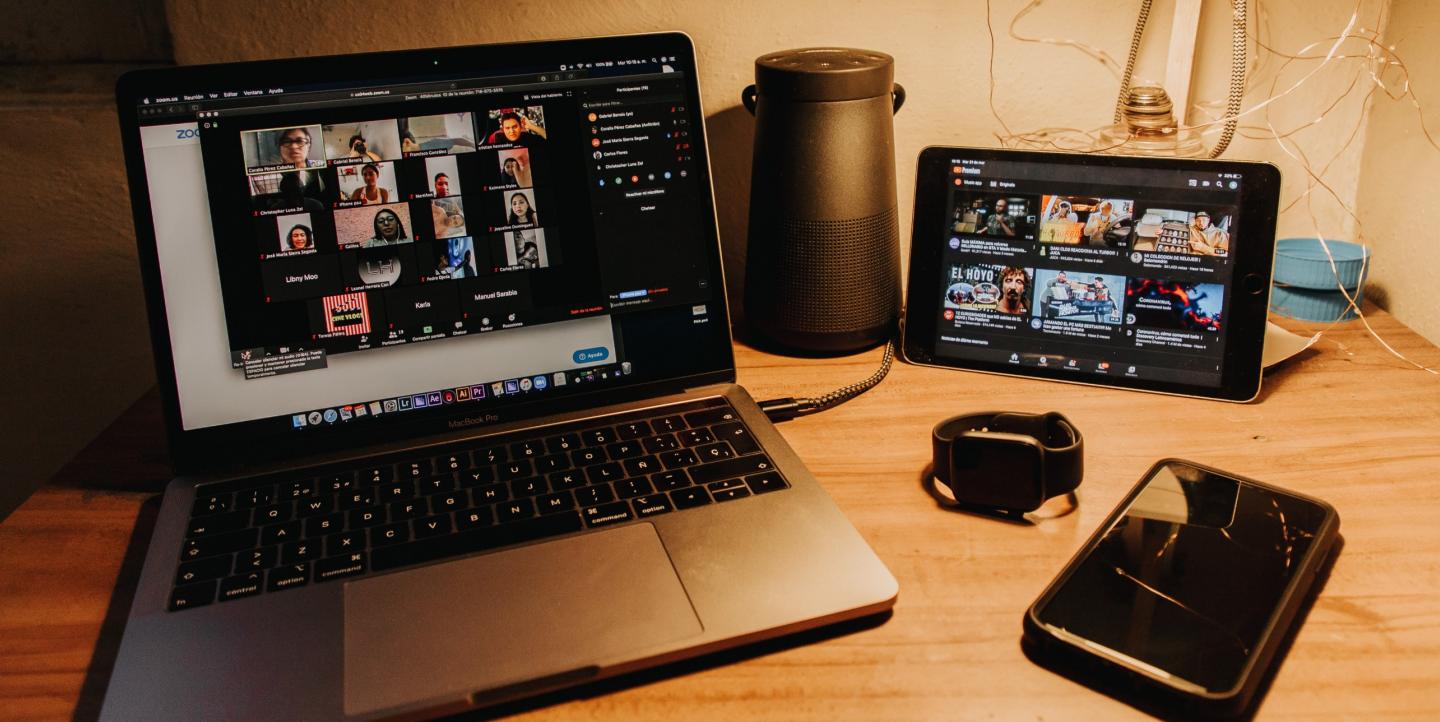This article is part of our online coverage of reporting on COVID-19. To see more resources, click here.
The novel coronavirus has defied geographical and political boundaries, infecting over 1.5 million people as of April 10. Unlike disasters, a pandemic’s impact is not confined to a single location, or a group of victims, and the potential for exposure is always present, yet unpredictable.
The age of COVID-19 has brought a number of new norms — social distancing, working from home, school closures and virtual happy hours, to name a few. Journalists are not exempt from these changes. While many things are slowing down, the ever-changing news cycle keeps them on the clock.
All these changes make reporting more complicated, and take a toll on journalists’ emotional and physical health.
[Read more: Mental health tips and resources for journalists]
Changing schedules
Experienced health reporter Heather Mongilio, who works for The Frederick News-Post in Maryland, said she never thought she’d be covering something quite like COVID-19.
In just two weeks of covering the virus, Mongilio worked nearly 95 hours, averaging 10-hour shifts each day.
“There’s just no end in sight, we haven’t been able to take a break,” Mongilio said. “I don’t know if I’m going to be covering this for the next month, for the next two months [or] until December. I don’t know if it’s going to slow down or if it’s just going to be constantly working these 10-hour shifts, hoping that I keep up with all of it.”
Meanwhile, Evan Hill, a journalist on the New York Times’ Visual Investigations team, was on a reporting trip when businesses in the U.S. began shutting down. After reporting in northwestern Syria, Hill returned home to an entirely different work schedule.
Although there are challenges, Hill’s experience abroad offers some perspective on the environment he returned to. Working from home is a great luxury for reporters in stable environments, he said, compared to people who are living in conflict zones like Syria and Yemen where people don’t have the luxury of working from home, or ordering goods from Amazon and grocery delivery services.
“Even though it’s mentally stressing on all of us to be socially distancing ourselves from friends and family, and staying home most of the day, it really is quite a luxury to be able to set up a nice workstation in your bedroom, your living room or your kitchen, and drink your coffee and order things online,” he said.
Digital changes
On top of her reporting beats, Mongilio also hosts The Frederick News-Post’s podcast, Frederick Uncut. Hosting a podcast in quarantine has created challenges like figuring out how to use phone calls instead of in-person guests while maintaining audio quality, and how to create a make-shift studio at home.
“I also do a lot more email reporting that I usually wouldn’t have,” Mongilio said. “Under normal circumstances, you always get the in-person interview. If you can’t do that, then a phone interview. Now it’s email.”
Hill expressed his own concern on how the visual investigations team would handle a new workflow.
“It changes the way that we communicate, it changes the way that we edit videos, it changes the flow of our teamwork and it changes our ability to collaborate,” Hill said. “We can no longer sit and edit things together, look at footage at the same time and make editorial judgement calls in real time when we’re editing videos, so that’s tough.”
[Read more: Key quotes: So you're a health reporter, now what?]
Physical health
It’s not just changing schedules that are creating challenges for reporters. The ever-present threat of illness also affects their work, especially as they try to cover updates related to the disease in their communities.
Mongilio reported on a drive-through testing center at Frederick Health Hospital in mid-March. To do so, she and her team parked across the street.
“We were taking pictures and we were watching it but when my editors were like ‘go down to that,’ there was a moment where I was like ‘well do you want me to talk to someone who is getting tested?’” Mongilio said. “I have asthma and I don’t want to put myself at risk, which is something I never really had to consider with reporting.”
She decided to keep her distance, and remained across the street. The photographer accompanying her, however, did approach people and found someone who was willing to speak with her over the phone.
(Editor’s note: Journalists should be cognizant of staying safe in the field and take precautions. IJNet has published an article with tips on how journalists can protect themselves during the COVID-19 pandemic, and more COVID-19 content can be found here.)
Mental health
Work-related stress isn’t new for journalists like Hill who had been reporting in conflict zones, but the stress is different, he said.
"Going from a fairly stressful environment, but stressful because you’re in a conflict zone, and returning to an environment where you have nothing to do but sit and stew with those concerns — it actually becomes a totally different kind of mental stress, a more drawn out and driftless kind of mental stress,” Hill said.
Without being able to go outside, journalists have to get creative with how they’re staying up-to-date on what’s happening. Their reliance on social networks means that they are constantly bombarded by information, which can take a toll.
“As a journalist, you have to be consuming news all day long, which means being plugged into the Twitter firehose,” he said. “It is kind of like sticking your face over the Chernobyl reactor and just staring into the radiation for like 10-12 hours a day because you’re sitting at home.”
During a webinar from Investigative Reporters and Editors, Poynter’s Al Tompkins said his biggest concern is that journalists don’t spend enough time decompressing outside of their work. Most people check their phones right before they fall asleep, sometimes in the middle of the night and usually as soon as they wake up, he said, which induces stress and burnout.
On top of professional stress, Mongilio expressed that she also worries about her 80-year-old grandmother, her mother who continues to work as a nurse and her sister.
“At the beginning, it was so much easier to stay on and just keep reporting through it,” Mongilio said. “When you first reached out and I was feeling great because I was so focused on reporting, I wasn’t really thinking about anything else. Now that we’re having this conversation, I’ve definitely noticed that I’m more concerned.”
Coping mechanisms
“You are nicer to your coffeemaker than you are to yourself,” said Tompkins during the webinar. “At least you turn the coffeemaker off when you are not using it. You have to consciously unplug from news coverage for a scheduled part of the day.”
Both Mangilio and Hill said they are trying to create a healthy balance between their work and life by implementing new coping mechanisms, but they haven’t found the perfect balance yet.
Hill tries to spend at least an hour a day exercising, reading, running to the grocery store or doing some other recreational activity. Likewise, Mangilio said that when she gets home, she tries to do something to relax.
It’s also important to bring in your colleagues when trying to create a healthy relationship to your work. Mongilio said she has editors who have taken the time to stop and ask her how she’s doing.
“They’ve always been pretty careful about how much we overwork and making sure that the workload is spread out, so I think that they’re doing the best that they can,” Mongilio said.
But Tompkins warned against waiting for your boss to come to you. “Don’t wait for your boss to ask you if you need time off,” he said in the webinar. “Especially while we are working remotely, the boss may have no clue how you are doing.”
Additional resources to support journalists during the pandemic:
- Dart Center for Journalism and Trauma
- Committee to Protect Journalists
- International News Safety Institute
- Poynter Institute for Media Studies
- International Women’s Media Foundation
- International Journalists’ Network
The Global Health Crisis Reporting Forum from ICFJ and IJNet connects journalists covering the novel coronavirus pandemic with leading health experts, resources and each other. Learn more and join the Forum through its Facebook group. Journalists can use these insights and quotes in their stories.
Main image CC-licensed by Unsplash via Gabriel Benois.


